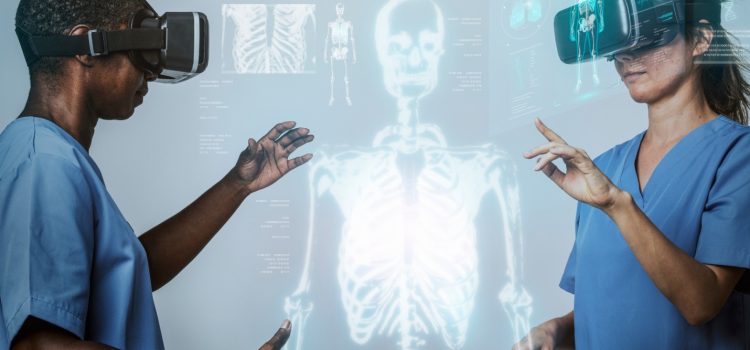
In the rapidly evolving landscape of healthcare, wearable health tech has emerged as a revolutionary force, transforming how we monitor and manage our well-being. From fitness trackers to sophisticated medical devices, wearable technology is redefining the boundaries of personal health monitoring, offering unprecedented insights and real-time data to both users and healthcare providers. This article delves into the various facets of wearable health tech, exploring its benefits, applications, and the future it promises.
The Rise of Wearable Health Tech
Wearable health technology encompasses a broad range of devices designed to be worn on the body, collecting and transmitting health-related data. These devices include smartwatches, fitness trackers, smart clothing, and even implantable devices. The rise of wearable health tech can be attributed to advancements in sensor technology, miniaturization of electronic components, and the increasing integration of artificial intelligence (AI) and machine learning algorithms.
Key Benefits of Wearable Health Tech
- Continuous Monitoring: Unlike traditional health monitoring methods that rely on periodic check-ups, wearable health tech provides continuous, real-time monitoring. This enables early detection of potential health issues, allowing for timely intervention and management.
- Personalized Health Insights: Wearable devices collect vast amounts of data, which can be analyzed to provide personalized health insights. Users can track their physical activity, sleep patterns, heart rate, and other vital signs, gaining a better understanding of their overall health and lifestyle.
- Improved Patient Engagement: Wearable health tech empowers individuals to take a proactive role in managing their health. By providing real-time feedback and actionable insights, these devices encourage users to make healthier choices and adhere to treatment plans.
- Enhanced Clinical Decision-Making: For healthcare providers, wearable health tech offers a wealth of data that can inform clinical decision-making. Continuous monitoring data can help doctors diagnose conditions more accurately, track the progress of treatments, and tailor interventions to individual patients.

Applications of Wearable Health Tech
- Fitness and Wellness: The most common application of wearable health tech is in the realm of fitness and wellness. Devices like Fitbit, Apple Watch, and Garmin trackers monitor physical activity, heart rate, and sleep quality. They provide users with daily goals, reminders, and progress reports, promoting a healthier lifestyle.
- Chronic Disease Management: Wearable devices are increasingly being used to manage chronic diseases such as diabetes, hypertension, and cardiovascular conditions. For example, continuous glucose monitors (CGMs) help diabetic patients track their blood sugar levels in real-time, while wearable blood pressure monitors provide continuous blood pressure readings.
- Cardiac Monitoring: Wearable ECG monitors, such as the Apple Watch Series 4 and later models, can detect irregular heart rhythms and atrial fibrillation. These devices alert users to potential cardiac issues, enabling early intervention and reducing the risk of severe complications.
- Sleep Monitoring: Wearable devices equipped with advanced sensors can track sleep patterns, including the duration and quality of sleep. By analyzing this data, users can identify factors that may be affecting their sleep and make necessary adjustments to improve their sleep hygiene.
- Mental Health: Wearable health tech is also making strides in the field of mental health. Devices like the Muse headband use EEG sensors to monitor brain activity and provide feedback for meditation and stress reduction. Additionally, some wearables track physiological markers of stress, such as heart rate variability, helping users manage their mental well-being.
- Rehabilitation and Recovery: Wearable devices are being used in physical therapy and rehabilitation to monitor patients’ progress and ensure adherence to exercise regimens. For instance, smart clothing embedded with sensors can track movements and provide feedback to both patients and therapists.
The Future of Wearable Health Tech
The future of wearable health tech is promising, with ongoing advancements poised to further enhance its capabilities and applications. Here are some key trends to watch:
- Integration with AI and Machine Learning: The integration of AI and machine learning will enable wearables to provide even more accurate and personalized health insights. These technologies can analyze vast amounts of data to identify patterns and predict potential health issues before they become critical.
- Advanced Sensors: The development of more advanced sensors will allow wearables to monitor a wider range of health metrics. For example, researchers are working on sensors that can detect biomarkers in sweat, providing insights into hydration levels, electrolyte balance, and even metabolic conditions.
- Interoperability: As wearable health tech becomes more prevalent, there will be a growing emphasis on interoperability. Ensuring that wearable devices can seamlessly integrate with electronic health records (EHRs) and other healthcare systems will be crucial for maximizing their potential.
- Wearables in Clinical Trials: Wearable health tech is expected to play a significant role in clinical trials, providing continuous, real-time data on participants’ health. This can enhance the accuracy of trial results and reduce the need for frequent in-person visits.
- Telehealth and Remote Monitoring: The COVID-19 pandemic has accelerated the adoption of telehealth and remote monitoring solutions. Wearable health tech will continue to be a key component of these solutions, enabling healthcare providers to monitor patients remotely and deliver care more efficiently.
Challenges and Considerations
While wearable health tech holds immense potential, there are several challenges and considerations that need to be addressed:
- Data Privacy and Security: The collection and transmission of health data raise concerns about privacy and security. Ensuring that wearable devices and associated platforms comply with data protection regulations and implement robust security measures is essential.
- Accuracy and Reliability: The accuracy and reliability of wearable health tech can vary depending on the device and the metrics being measured. Ongoing research and development are needed to improve the precision of these devices.
- User Adoption and Engagement: For wearable health tech to be effective, users must be willing to adopt and consistently use these devices. Ensuring that wearables are user-friendly, comfortable, and provide clear value to users is crucial for widespread adoption.
- Cost and Accessibility: The cost of wearable health tech can be a barrier for some individuals. Making these devices more affordable and accessible will be important for ensuring that the benefits of wearable health tech are available to a broader population.
Conclusion
Wearable health tech is transforming health monitoring, offering continuous, personalized insights that empower individuals and healthcare providers alike. From fitness and wellness to chronic disease management and mental health, wearable devices are enhancing our ability to monitor and manage our health in real-time. As technology continues to advance, the potential applications and benefits of wearable health tech will only grow, paving the way for a more proactive and personalized approach to healthcare. However, addressing challenges related to data privacy, accuracy, user adoption, and accessibility will be crucial for realizing the full potential of wearable health tech in the years to come.












































